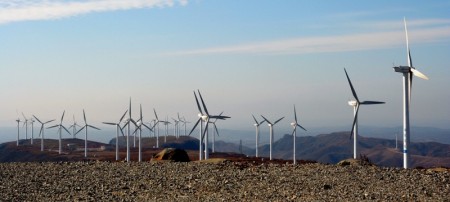By Michael O’Boyle, Energy Innovation, LLC

In light of the recent U.S.-China pledges to reduce greenhouse gas emissions, it is clearer than ever that China is committed to achieving a low-carbon electricity system and benefiting from a cleaner environment to boost economic development. But is this technically feasible in the world’s largest energy economy?
Research from an upcoming landmark study by the China National Renewable Energy Center (CNREC) concludes that it is technically possible for China to get a majority of its electricity from renewable resources, but does not address several features of the current Chinese electricity system that constrain renewable integration. While the results are encouraging, many barriers, from policies and regulatory structures, to electricity contracts and institutional inertia are slowing the process of decarbonizing the electricity sector.
For example, the current contract structure between Chinese coal generators and grid operators is one obstacle: it guarantees the purchase of an annual minimum amount of energy from each generator (usually between 4000–5000 hours/year). While this guarantees financial stability for coal generators, the inflexible nature of these contracts means that the coal-fired plants operate at capacity for a majority of the year, regardless of economic and environmental outcomes.
The dispatch policy of the world’s largest grid operator, State Grid, which manages over 80 percent of the Chinese electrical grid, is also slowing the transition to renewables. Under current dispatch rules, fossil generators are guaranteed equal shares of the energy production demanded by the grid, regardless of efficiency or air pollution impacts. In combination with the contract structure, the regulatory scheme guarantees most coal plants will continue to operate whether or not there are cleaner, cheaper, more flexible options available.
The preliminary results of the new study were reported on September 15 in Beijing at a workshop, “Getting to a High Share of Renewable Power,” convened by the Energy Foundation China in conjunction with the CNREC, the State Grid Energy Research Institute (SGERI), and Energy Innovation. Workshop participants examined CNREC’s work demonstrating the technical feasibility of reaching high shares (60, 80, and 90 percent) of renewable energy on the Chinese electric grid by 2050.
Like the National Renewable Energy Laboratory’s Renewable Electricity Futures Study in the United States and the European Climate Foundation’s Roadmap 2050, the CNREC study aims to lay the groundwork for renewable energy policy in China. The final version of the study will be publicly released in the upcoming months.
At the workshop, an international panel including American, Chinese, and German experts recommended several key reforms:
- China should ramp down guaranteed hours for existing coal plants and encourage power companies to retire their least efficient, most polluting units first.
- China should implement a two-part tariff, including portions for capacity and energy, to compensate coal plants for providing a backstop of reliability while allowing hours of dirty coal energy to be displaced by new renewable energy generation.
- China should implement reforms to allow both supply- and demand-side resources to provide energy and ramping services to support renewable integration and displace coal generation.
- China should move toward a more economic dispatch system in which renewable energy is given priority over fossil-fueled generation.
Given recent commitments to combat air pollution and mitigate climate change, China’s clean energy future is bright, but not without significant challenges in policy and institutional reforms. The workshop was a tremendous opportunity to share international experience with Chinese policy makers who will be responsible for the world’s most ambitious energy transformation.
Michael O’Boyle is a Policy Analyst at Energy Innovation, LLC.


